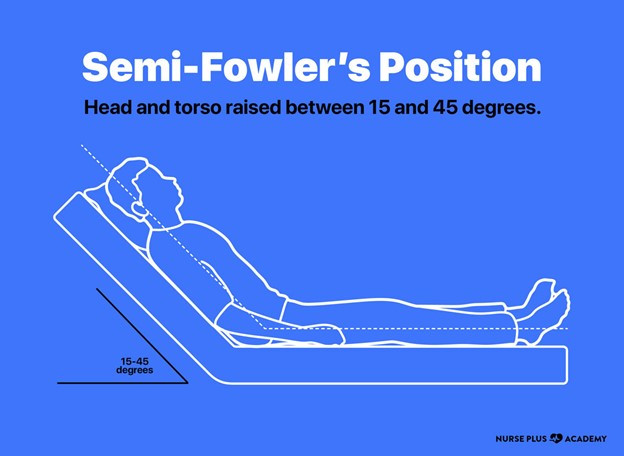An 8-year-old patient with status asthmaticus insists on sitting straight up in bed. Which action should the nurse take?
Allow the patient to stay in the position the child has chosen.
Explain to the patient why semi-Fowler's is a more therapeutic position.
Demonstrate a variety of positions to the patient.
Remove the pillows from the patient's bed.
The Correct Answer is B
Choice A rationale:
Allowing the patient to stay in the chosen position might not be the best approach, as the child's preference might not align with therapeutic considerations for managing status asthmaticus.
Choice B rationale:
Semi-Fowler's position, with the head of the bed elevated, promotes improved lung expansion and easier breathing for patients with respiratory distress. Explaining the rationale behind this position to the child helps them understand its therapeutic benefits, encouraging compliance.
Choice C rationale:
Demonstrating various positions could confuse the child and delay appropriate intervention. A clear explanation of the preferred position is more effective in this critical situation.
Choice D rationale:
Removing pillows might be counterproductive, as elevating the head of the bed is beneficial for respiratory distress. This choice contradicts the therapeutic goal.

Nursing Test Bank
Naxlex Comprehensive Predictor Exams
Related Questions
Correct Answer is D
Explanation
Choice A rationale:
Painful joints are not a common side effect of prednisone. Prednisone can cause musculoskeletal issues, but painful joints are not a prominent manifestation.
Choice B rationale:
A decrease in appetite is a possible side effect of prednisone. However, it's not the focus of this question, as other choices are more relevant.
Choice C rationale:
A yellow tinge to the whites of the eyes (jaundice) is not a commonly associated side effect of prednisone. Jaundice is usually linked to liver dysfunction or other conditions affecting bilirubin metabolism.
Choice D rationale:
A round face, often referred to as "moon face,”. is a well-recognized side effect of prednisone. It occurs due to fluid retention and fat redistribution, leading to a characteristic facial appearance.
Correct Answer is A
Explanation
Choice A rationale:
If the pancreatic enzymes are effectively aiding in digestion for a patient with cystic fibrosis, the expected outcome would be improved absorption of nutrients and fats. This would result in normal stool consistency and color. Cystic fibrosis often impairs the pancreas' ability to produce sufficient digestive enzymes, leading to malabsorption and fatty stools. Therefore, observing normal stool consistency indicates that the enzymes are working adequately.
Choice B rationale:
The color of the patient's sclerae (the white part of the eyes) is not directly related to the effectiveness of pancreatic enzymes in cystic fibrosis. Scleral color can be affected by various factors such as jaundice, liver function, and blood disorders.
Choice C rationale:
Moist buccal mucosa (inner lining of the mouth) is not a specific indicator of the effectiveness of pancreatic enzymes. This observation could be influenced by hydration status and overall oral care.
Choice D rationale:
Glucose presence in urine is more related to diabetes management rather than the effects of pancreatic enzymes in cystic fibrosis. The absence of glucose in urine does not provide information about the efficacy of these enzymes.
Whether you are a student looking to ace your exams or a practicing nurse seeking to enhance your expertise , our nursing education contents will empower you with the confidence and competence to make a difference in the lives of patients and become a respected leader in the healthcare field.
Visit Naxlex, invest in your future and unlock endless possibilities with our unparalleled nursing education contents today
Report Wrong Answer on the Current Question
Do you disagree with the answer? If yes, what is your expected answer? Explain.
Kindly be descriptive with the issue you are facing.
